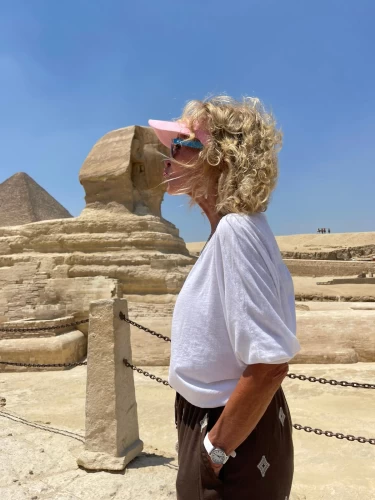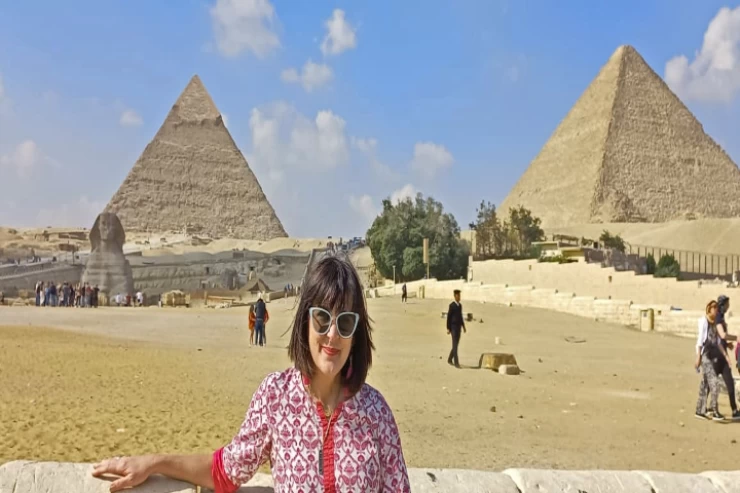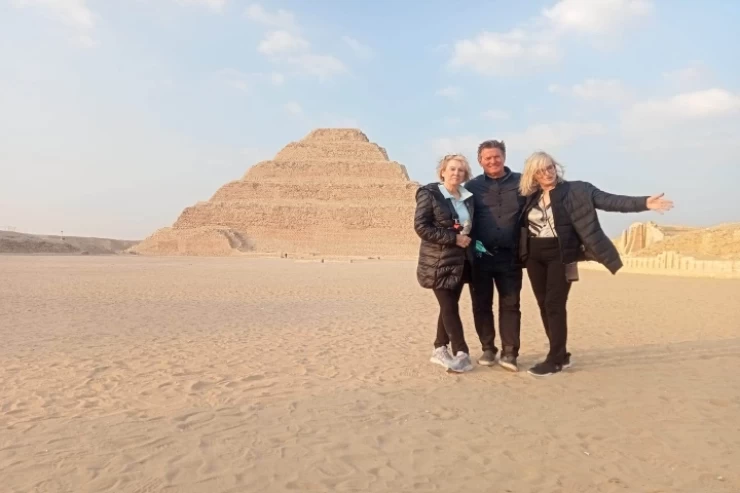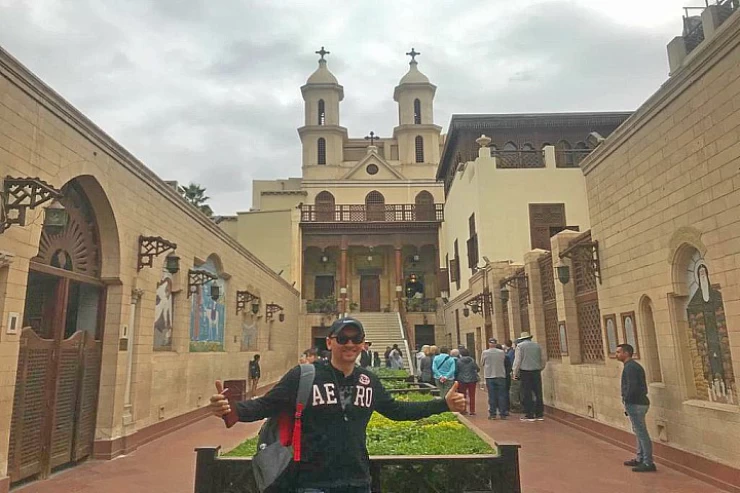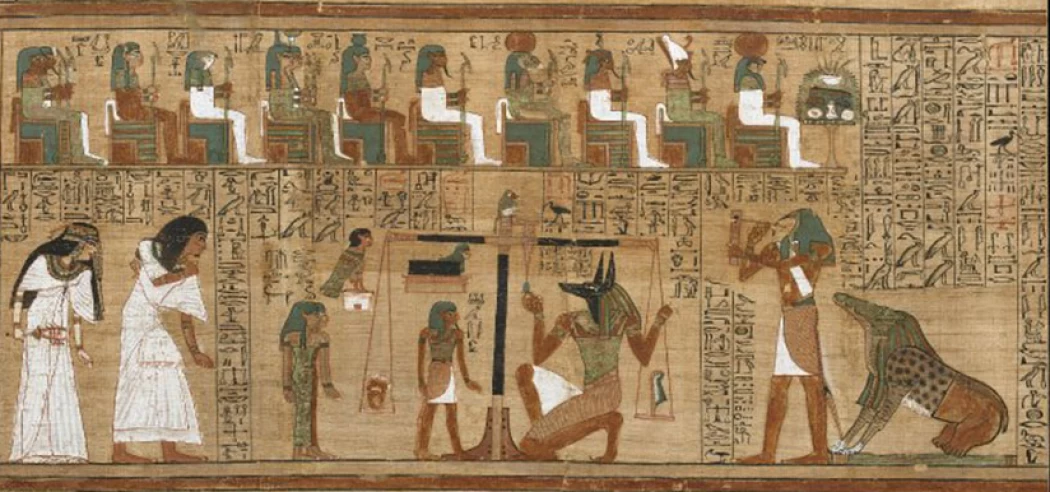
Religião no Egito
A religião no Egito
A religião no Egito controla muitos aspectos da vida social e é endossada por lei. A religião estatal do Egito é o Islã. Embora as estimativas variem muito na ausência de estatísticas oficiais. Desde o censo de 2006, e portanto as estatísticas disponíveis, são estimativas feitas por agências religiosas e não-governamentais.
Crenças Religiosas No Egito
O país é majoritariamente sunita muçulmano (com estimativas variando de cerca de 80% a 94%), com o próximo maior grupo religioso sendo o copta (com estimativas variando de 6% a 20%). Os números exatos estão sujeitos a controvérsia, com os cristãos alegando que eles têm sido sistematicamente subestimados nos censos existentes.
O Egito recebe duas das principais instituições religiosas. A Igreja Copta Ortodoxa Copta foi fundada em Alexandria, que foi fundada por São Marcos em meados do primeiro século. A Mesquita Al-Azhar foi estabelecida em 970 D.C. pelos Fatimids como a primeira universidade islâmica no Egito.
Muçulmanos e cristãos No Egito, compartilham uma história comum, identificação nacional, etnia, sociedade, cultura e língua.
Entre as visões religiosas comuns no Egito está a mesquita ao lado da igreja, onde em 2002 sob o governo de Mubarak, (7 de janeiro) foi considerada um feriado oficial por ocasião do Natal no Egito, embora os cristãos representem o mínimo na aplicação da lei, segurança do Estado e funções públicas E de serem discriminados na força de trabalho com base em sua religião.
As relações com a minoria copta
Os cristãos coptas, que representam as religiões mais antigas do Egito, tornaram-se a maior minoria étnica e religiosa do Egito após entrarem na conquista islâmica do Egito, e agora são mais afetados pela legislação que pode discriminar entre eles. Os coptas no Egito enfrentaram uma marginalização crescente após o golpe de 1952, liderado por Gamal Abdel Nasser. Até recentemente, os cristãos tinham que obter aprovação presidencial mesmo para pequenas reformas da igreja. Embora a lei tenha sido flexibilizada em 2005 com a entrega da autoridade para aprovar os governantes, os coptas não enfrentam mais obstáculos na construção de novas igrejas.
Antiga religião egípcia
A antiga religião egípcia, com seu complexo sistema de crenças e rituais, era parte integrante da antiga sociedade egípcia. Ela rezava sobre a interação dos egípcios com muitas deidades que se acredita existir e controlar o mundo, onde rituais como orações e oferendas eram apresentados às deidades para obter sua satisfação. Uma das práticas religiosas oficiais que se concentrava nos faraós eram os governantes do Egito, onde ele acreditava que possuía o poder divino através de sua posição. Eles atuavam como intermediários entre seu povo e os deuses, e eram obrigados a preservar os deuses do antigo Egito através de rituais e performances para que pudessem preservar sua propriedade e status, já que o antigo estado dedicava enormes recursos aos rituais religiosos e construindo templos ao deus faraônico.
Os indivíduos podiam se comunicar com as deidades para seus próprios propósitos e pedir ajuda através da oração ou forçando as deidades a agir por magia. Estas práticas eram distintas dos rituais e instituições formais, mas estavam intimamente relacionadas a eles. A famosa tradição religiosa se tornou mais notável ao longo da história egípcia à medida que o status do Faraó declinou. A crença egípcia na vida após a morte e a importância das práticas funerárias é evidente nos grandes esforços feitos para garantir que suas vidas permaneçam após a morte - fornecendo sepulturas e bens maciços e oferecendo-se para preservar os corpos e almas mortas do falecido e suas propriedades.
Os detalhes da crença religiosa mudaram com o passar do tempo, pois as raízes da religião remontam aos tempos pré-históricos no Egito e duraram mais de 3000 anos, pois a importância de certas deidades aumentou e diminuiu, e suas complexas relações mudaram em alguns momentos, e por isso algumas deidades se tornaram proeminentes para outras, incluindo Aquele é o deus sol Ra, o deus criador Amun, e a deusa mãe Isis. Por um curto período, na teologia promulgada pelo faraó Akhenaten, que mudou sua capital para Tel El Amarna em El Minya hoje, um novo deus único foi promovido, Aten, substituindo o panteão tradicional. A antiga religião e lendas egípcias deixaram para trás muitos outros escritos e monumentos além das grandes influências sobre as culturas antigas e modernas.
O antigo povo egípcio cercado por fenômenos naturais e depende de sua própria existência, concebeu ao seu redor poderes divinos que habitam os elementos cósmicos, sobre os quais estão a terra, o céu, o éter e a inundação do Nilo, bem como o sol e a lua. Estas forças, que foram incorporadas aos corpos humanos, cristalizaram muitas deidades cósmicas de importância geral para todos, na medida em que estas deidades não estão mais associadas em suas origens com nenhuma região ou cidade do país, pois por sua presença em cada lugar não havia necessidade de uma forma organizada de um credo ou de um templo local específico Exatamente. De acordo com a imaginação poética dos povos orientais, estes ideais humanos foram reduzidos a estas divindades, como foram referidos na própria linguagem da natureza humana. Chegamos a alguns desses mitos em plena forma e desde relativamente tarde, mas inúmeras referências a eventos míticos em alguns textos antigos indicam que esses mitos já estavam florescendo desde o final da Quinta Dinastia, pelo menos.
Na era do estado antigo, os egípcios costumavam descrever Deus como estável e confiante, pois ele se manifesta e brilha como o sol. E estabelecido, quanto à aparência externa de suas almas, ele se revela como o sol em seu brilho, e é também grande e gentil. E são os deuses que fazem a criança e a trazem à vida e a amam com proteção, amor e educação, ficando atrás dele, mantendo-o com sua vida, alimentando-o e alimentando-o com virtude, saúde e vestuário, elevando-o alto, e, no conjunto, toda sua vida está nas mãos de Deus.
Segundo a antiga convicção egípcia sobre os Deuses, o homem é o servo do Senhor que é celibatário em sua adoração e amor. Embora a maioria das características acima mencionadas sejam atribuídas ao deus (Ptah), isto é apenas uma coincidência, pois muitos dos nomes das bandeiras que conhecemos sobre o antigo estado estavam relacionados às relíquias, a maioria das quais foram encontradas na área de Memphis. É natural que a freqüência do aparecimento do nome da outra divindade seja derivada dos nomes de outras divindades que descobrimos que o olho dos atributos que encontramos estão relacionados aos nomes de indivíduos compostos pelo nome (Ptah) atribuído a essas divindades também ou a qualquer outra divindade, e de fato às divindades em geral.
Parece no antigo conceito egípcio que os destinos dos seres humanos ou seu destino não são inevitavelmente impossíveis de serem evitados, pois uma pessoa pode mudar seu destino através de suas ações se Deus quiser, e desde que amanhã seja sempre (cai nas mãos de Deus) a criança nasce acompanhada pelo cuidado divino, e os pais consolidam seus laços com os deuses para que ele ordene que uma criança nasça para eles e, desde então, uma pessoa exerça suas ações somente através do consentimento e consentimento dos deuses. Os humanos sugerem ações, mas Deus as impõe, ou como expresso por um dos sábios egípcios (uma pessoa fala a palavra, mas o assunto é para o Senhor). O ritual fúnebre tinha o objetivo de libertar a alma do corpo para que ela pudesse se mover livremente e se unir novamente ao corpo para poder viver para sempre. Entretanto, também era importante preservar o corpo morto, pois os egípcios acreditavam que o Papa voltava ao seu corpo todas as noites para obter uma nova vida, antes de partir pela manhã.
Nos primeiros tempos, acreditava-se que o faraó falecido ascendia ao céu e habitava entre as estrelas. Ao longo do Velho Reino (c. 2686-2181 a.C.), no entanto, ele passou a estar mais estreitamente associado com o renascimento diário do deus sol Ra e com o governante do submundo Osíris, à medida que essas divindades se tornaram mais importantes.
Nas crenças pós-vida totalmente desenvolvidas do Novo Reino, a alma tinha que evitar uma variedade de perigos sobrenaturais no Duat, antes de passar por um julgamento final, conhecido como o "Pesar do Coração", realizado por Osíris e pelos assessores do Maat. Neste julgamento, os deuses compararam as ações do falecido enquanto vivo (simbolizado pelo coração) com Maat, para determinar se ele ou ela tinha se comportado seguindo Maat. Se o falecido foi julgado digno, seu ka e ba foram unidos em um akh. Várias crenças coexistiram sobre o destino do akh. Muitas vezes se dizia que os mortos moravam no reino de Osiris, terra exuberante e agradável no submundo. A visão solar do além, na qual a alma falecida viajava com Ra em sua jornada diária, ainda estava principalmente associada à realeza, mas podia se estender a outras pessoas também. Durante o curso dos Reinos Médio e Novo, a noção de que o akh também podia viajar no mundo dos vivos, e até certo ponto afetar magicamente os eventos lá, tornou-se cada vez mais prevalecente.
If Egypt has often been referenced by historians as ‘the Cradle of Civilization’, it has probably one of the most complicated religious aspects in entire human history. The fertile banks of the Nile did host agriculture, but they also produced a vast culture, where religion permeated every single aspect of everyday life, politics, and social order. From the earliest days of ancient Egyptian civilization up to this day, despite being primarily a desert dry land, Egypt has been a melting pot of different religions, starting from polygamy to finally embracing monotheism.
In this piece, Section II, How We Were: Reflections on Egyptian History, From Ancient Polytheism to Christianity & Islam, will be reviewed and analyzed, as well as the role of religion in the lives of the Egyptian population.
As a society, it can be said that religion was the foundation of ancient Egypt. The ancient Egyptians worshiped as they knew that everything from the annual flooding of the Nile to the cycle of life and death was not only natural but controlled by some divine power. This was a belief characterized by a multiplicity of deities, all of whom were in charge of a specific facet of existence and/or nature.
The Major Gods and Goddesses
Ra (or Re): Revered as the God of the Sun, Ra has been depicted as the most potent deity in ancient Egyptian religion. It was believed that Ra inhabited the sky during the day, providing light to the earth, and resided in the underworld at night. He would oftentimes be portrayed with a falcon’s head and wear a sun disk on top of his head.
Osiris: Osiris was an Egyptian death and resurrection god and held a significant place in Egyptian mythology in representing the concept of life as a cycle of birth, death, and resurrection. The Osiris myth and his resurrection, in the capable hands of Isis, his wife, became the pillars of the Egyptian afterlife experience.
The goddess was immensely popular and powerful. She was a protector of motherhood, magic, and fertility. Her protective aspect and the ability to bring Osiris back to life made her worshiped.
Horus, the god of the sky and of the king, is often shown as a hawk. He was also known because of his rivalry with the chaos god Set for dominion over the land of Egypt, which represents the struggle of order and chaos.
Anubis is the Egyptian god associated with funerary rites and the protection of the dead. He had the important task of supervising the ceremony of the heart's weighing, which assessed a person’s spirit in the next world.
The gods were not distant or abstract figures; they were present in every facet of life. Egyptians built temples across the country, conducted elaborate rituals, and offered daily prayers and sacrifices to ensure the favor of the gods and maintain ma’at—harmony and order.
Worship wasn’t the only reason for building temples; these structures were believed to be the earthly homes of the gods. The pharaohs had enormous temples like Karnak and Luxor built to worship and carry out rituals for the gods as well as to showcase the power of their rule over the land. No one was permitted to enter the temple’s most sacred, innermost areas except for the priests, who were thought to be the only ones capable of interacting with the gods.
Priests offered meals, incense, and prayers to the gods on a daily basis, performing their duties towards ensuring the gods’ continuous provision of security over the land of Egypt. These clergymen were very powerful and at times even had political authority as they helped the pharaohs in religious affairs.
For the Ancients, death was not a permanent end; there would be life after death. This notion fueled the people’s efforts to focus on death and think about how they would prepare in the appropriate way for their journey to the underworld, which in their minds was not an easy place to reach but one that guaranteed everlasting bliss as long as the challenges were overcome.
Mummification and the Preservation of the Body
Mummification was pivotal in shaping the Egyptian view of what happens when one dies. The body was to be maintained so that the ‘ka’ (or soul) would remember and go back to its residence after death. Mummification came to be practiced with a set of procedures that included arts of organ procurement, chemical treatment, and linen envelopment of the entire body.
A process of putting up preparatory arrangements for one’s afterlife would also include making tombs, which would have items that the dead person would require, such as food, clothes, and upright ‘ushabti’ figures meant to depict servants. The magnificence that royal burial places such as the Giza pyramids and those in the Valley of the Kings display indicates the extreme measures taken to ensure adequate rest and healthcare for the leaders when they die.
The mummification custom was bound to the Egyptian people's love of the afterlife. Bodies had to be maintained in a way that allowed the spirit, or 'ka', to identify it and be able to go back in after death. Mummification came to be seen with specific practices, which included the arts of organ downsizing, substance drying, and body plastering with bandages.
Another aspect of preparing for eternity was that of constructing tombs containing the essentials for the deceased, such as an abundance of food and clothes and miniature statues of servants known as ushabtis. Such an adulation can be seen from the wonderful construction of royal burial sites such as those surrounding the Great Pyramids of Giza and along the Valley of the Kings, where endless hope lies for the reasonable resting of the leaders within the period of their deaths.
The “weighing of the heart” ritual is one of the key convictions regarding the hereafter. In Egyptian cosmology, when a deceased individual was brought to the land of the dead, the god Anubis was tasked with weighing the heart against the feather of Ma’at, the deity representing truth and justice. Where the scales tipped in favor of the feather, the individual was considered fit to take his place among the dead in the other world. If the heart tipped the scale against the feather, then due to some impertinent act or lie, that heart would be consumed by the ferocious goddess Amit and the essence would no longer exist.
3. The Introduction of Monotheism: The Amarna Period
Throughout the reign of Pharaoh Akhenaten, also known as Amenhotep IV, which was between the years 1353 and 1336 BCE, many changes were witnessed, especially in Egyptian religious practices. Akhenaten believed there was only one God to worship, and that was Aten, the sun disk, and he promoted the worship of Aten only. He constructed a new city called Akhetaten (Amarna, modern) and concentrated on the worship of this one god, excluding completely the rest of the traditional deities in the Egyptian pantheon.
The extent of how long this extreme change in religious practices lasted is very minimal. After the death of Akhenaten, the former worship of many gods was reinstated by the administrations that followed him, particularly through King Tutankhamun, and the cult of Aten was, for the most part, expunged from history. Still, the issue of Akhenaten's obsessive tendencies concerning religion remains a curious page in the story of religions in ancient Egypt. It demonstrates how potential changes in religion can be such a threat even when a rigid system is in place.







